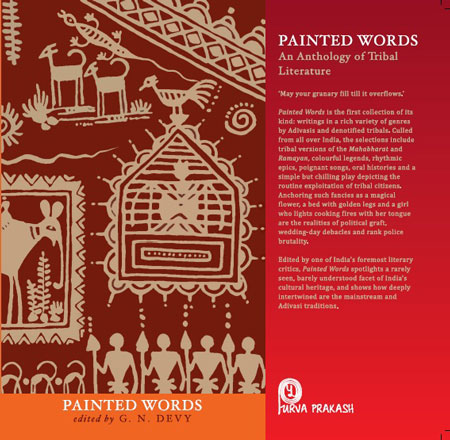“If we are to halt the destruction of ecosystems, we need to understand how closely biodiversity and cultural diversity are intertwined. Perhaps it is time to reverse the gaze and begin to learn afresh from Adivasis.” – Felix Padel & Malvika Gupta in “Are mega residential schools wiping out India’s Adivasi culture?” (The Hindu, 13 February 2021) | More about the role of tribal communities in preserving India’s biodiversity and ethnobotany >>
Old seed festival, being organised by Sajeevani in association with Samata and CRYNET, is a wonderful example of community and NGOs participation which ensures that farmers get quality seed, said Principal Scientist of National Bureau of Plant Gentic Resource’s Regional Centre at Hyderabad B. Sarath Babu about the programme held at Panasavalasa, 25 km from here on Saturday.
Efforts being made for the last 18 years have resulted in farmers of this area regularly going to markets in Visakhapatnam, said Ravi Rebbapragada, executive director of Samata, an NGO, who has done a lot of work in the area to empower the local Girijans. He urged the tribal people, who are an enterprising lot, to work as a cooperative since the Savva panchayat area, under which falls Panasavalasa, has good potential to grow many kinds of crops. Coffee and pepper too can be taken up, he said. In the past, farmers of this area contributed Rs. 6 lakh to which Rs. 3.5-lakh subsidy from ITDA was added to purchase a van to transport vegetables to Visakhapatnam.
Mr. Ravi felt that the older generation Girijans do not know much of law, procedure and the weight a written word carries and wanted the educated younger generation to concentrate their efforts on these issues and help the community.
Pandoi Routh, former president of Vegetable Growers’ Association, wanted the younger generation to change as it was giving more importance to consumerism, which was not right since the Girijans were surviving by following traditional farming methods. […]
Krishna Prasad of Sahaja Samudha Organic Producers Company (Bangalore) felt that farmers must market their products on their own since the paddy they grow have curative qualities. They must mill the paddy and sell rice to retain its quality. He was happy that many old varieties were continuing here. […]
The ninth edition of the old seed festival also marked the launching of the Dhimsa paddy and millets seed bank. […]
Source: Work as a cooperative, tribal farmers told – G. Narasimha Rao, The Hindu, ARAKU VALLEY (Visakhapatnam district), April 29, 2013
Address : https://www.thehindu.com/todays-paper/tp-national/tp-andhrapradesh/work-as-a-cooperative-tribal-farmers-told/article4665785.ece
Date Visited: 12 December 2020
[Bold typeface added above for emphasis]
“It was assumed that tribal people have same health problems, similar needs and hence the uniform national pattern of rural health care would be applicable to them as well, albeit with some alteration in population: provider ratio. The different terrain and environment in which they live, different social systems, different culture and hence different health care needs were not addressed.” – Abhay Bang in Report of the Expert Committee on Tribal Health >>
Tips for using interactive maps
Toggle to normal view (from reader view) should the interactive map not be displayed by your tablet, smartphone or pc browser
For details and hyperlinks click on the rectangular button (left on the map’s header)
Scroll and click on one of the markers for information of special interest
Explore India’s tribal cultural heritage with the help of another interactive map >>
See also
Adverse inclusion | Casteism | Rural poverty
Demographic Status of Scheduled Tribe Population of India (Census figures 2011)
Fact checking | Figures, census and other statistics
Human Rights Commission (posts) | www.nhrc.nic.in (Government of India)
Search tips | Names of tribal communities, regions and states of India
“What is the Forest Rights Act about?” – Campaign for Survival and Dignity
“Who are Scheduled Tribes?” – Government of India (National Commission for Scheduled Tribes, NCST)
“India, a union of states, is a Sovereign, Secular, Democratic Republic with a Parliamentary system of Government. The President is the constitutional head of Executive of the Union. In the states, the Governor, as the representative of the President, is the head of Executive. The system of government in states closely resembles that of the Union. There are 28 states and 8 Union territories in the country. Union Territories are administered by the President through an Administrator appointed by him/her. From the largest to the smallest, each State/UT of India has a unique demography, history and culture, dress, festivals, language etc. This section introduces you to the various States/UTs in the Country and urges you to explore their magnificent uniqueness…” – KnowIndia (Government), States and Union Territories (Visited: 2 September 2023)
Learn more about India’s 28 States and 8 Union Territories – From Andhra Pradesh to West Bengal | Nutrition >>
